Analysis of the optical elements of an overhead projector
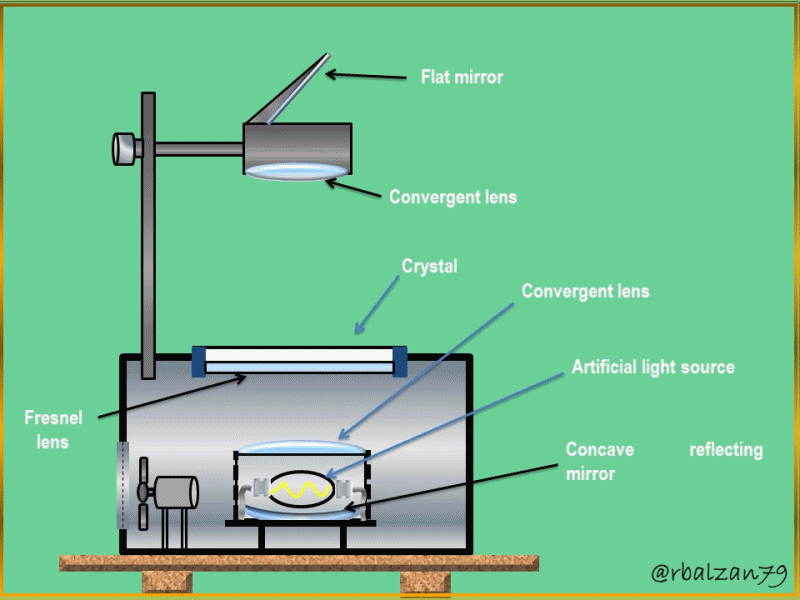
1.- Analysis and calculations of variables in the generation of images in a convergent lens.
2.- Calculations of variables in image generation in a diverging lens.
4.- Converging-converging lens arrangement in the optical system of a refracting telescope.
5.- Geometry implemented in the understanding of the algebraic formulation of thin lenses.
6.- Analysis of the arrangement of the optical system of a Newtonian reflecting telescope.
We have already been related to the analysis of the generation of an image in an important optical instrument such as the telescope, both refracting (composed of lenses) and reflecting (composed of mirrors), therefore, we have seen the light rays act through two important phenomena such as refraction and reflection, Now, we will link with the acetate overhead projector and we will see how this instrument implements the phenomenon of light that transports a certain image designed on a sheet of acetate and, in addition, know each of its optical elements to analyze the corresponding ray scheme.
The projection of images has been a historical objective for mankind, therefore, each optical instrument is made in order to optimize each characteristic of the phenomenon of light, and the overhead projector sheets or sheets of acetate, did not escape from this feature, in addition, for his time was very useful in classrooms, therefore, before starting to analyze all the optical elements of this instrument, it is necessary to observe the following figure 1.

In the previous figure 1, we could notice each optical element linked to the optical system of this instrument, if we start from the base or light box, we find a concave type spherical mirror, of course, this optical element will be of reflector type, for being a mirror and, whose characteristic is to reflect the light rays, remembering a concave type spherical mirror, we can say, that the polished part of this optical element is the internal curved part, that is to say, of the cap, its focus is located in front of the mirror.
We notice that this concave mirror has the function of reflecting all the artificial light emitted by the lamp towards a convergent lens, therefore, concentrating all those light rays parallel to its optical axis in its focus to offer greater light power when reaching the convergent lens, let's observe the following figure 2.
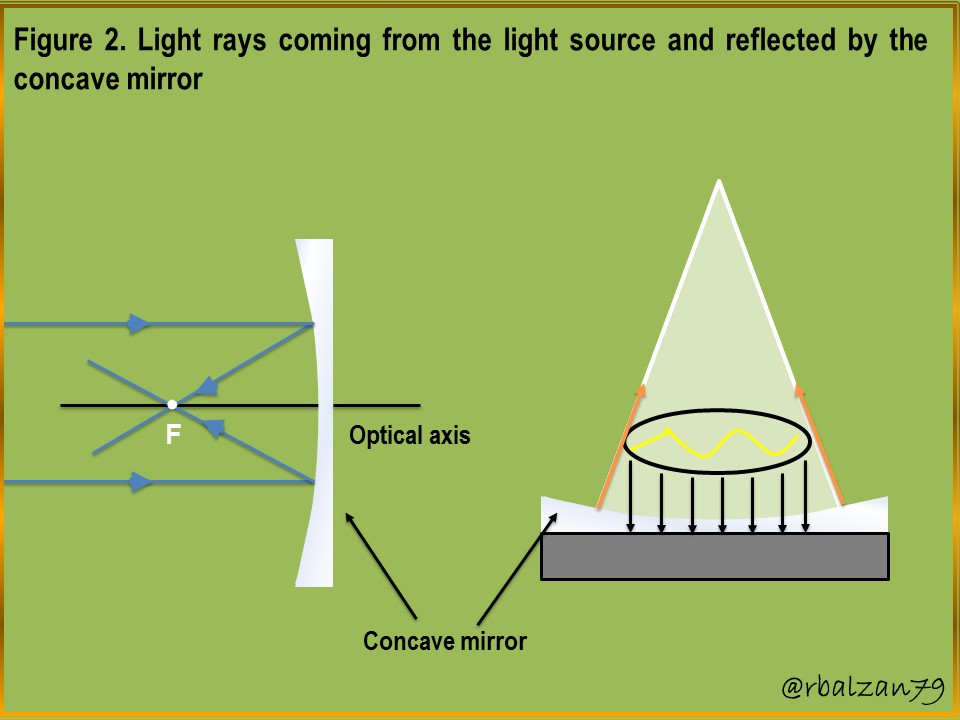
In the previous figure 2, we observe how the light emitted by the light source is reflected upwards by means of the concave spherical mirror, where the other optical element to be analyzed is located, i.e. a convergent lens. So far we have not analyzed the generation of images, we have only seen how the artificial light is reflected by the concave mirror towards the convergent lens.
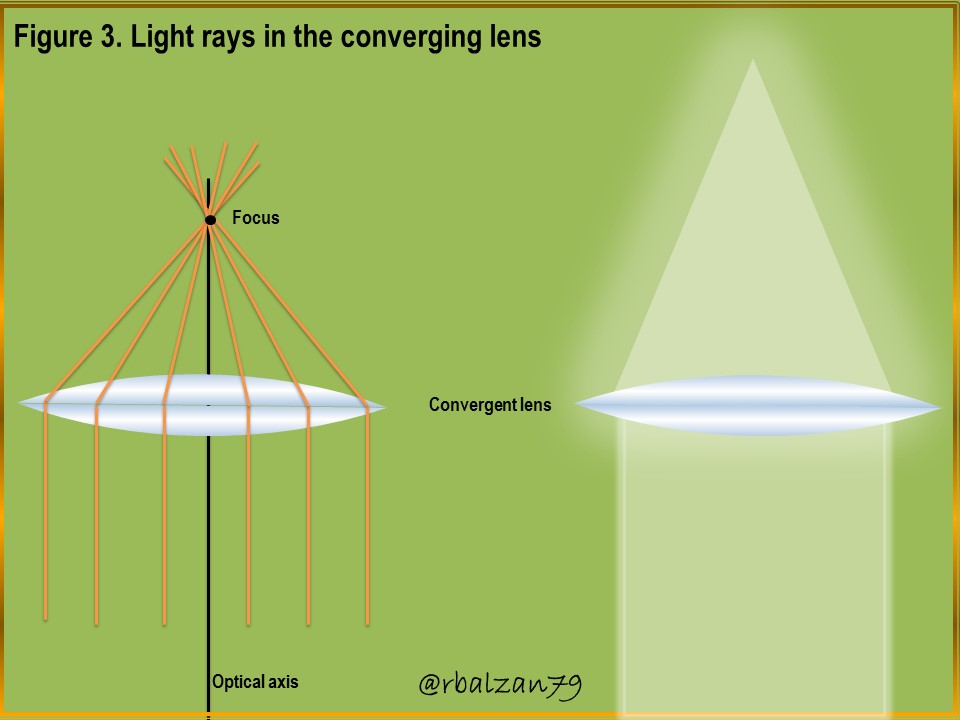
Unlike in the concave mirror, the light in a lens refracts, if it is convergent, towards a point called focal point or focus (F) and whose length, called focal distance (f), so far we continue analyzing the concentration of the light emitted by the light source towards each of the optical elements components of the so-called light box, let's see now figure 4.
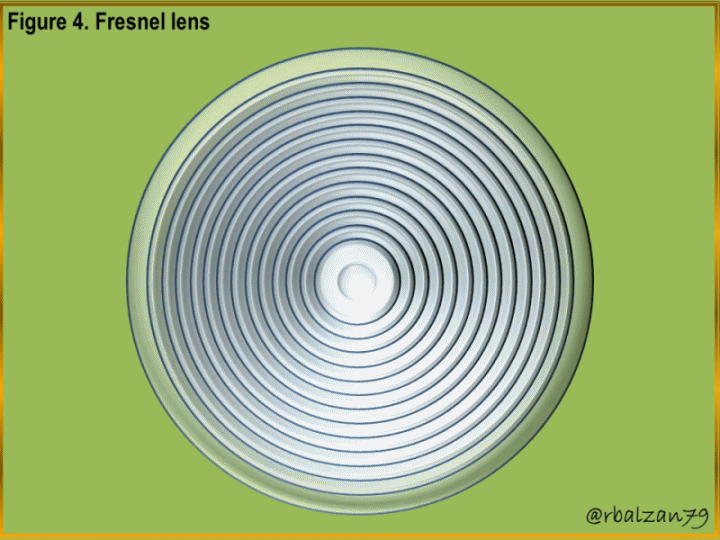
In the previous figure 4, we arrive at the Fresnel lens and, it is recognized for being a special lens, because despite its large size or dimensions, it is thin and very light, in addition, one of its most striking features is that it is constituted by concentric rings which are coupled on a flat surface, This aspect allows it to be a powerful collector of light, like conventional lenses, this type of lens has similar radii of curvatures, only fragmented into concentric rings, as you could see in Figure 4.
Thus, in the three optical elements analyzed so far, we have noticed that they are implemented only to concentrate and enhance the illumination generated by a certain light source, as observed in this type of optical instrument such as the acetate sheet overhead projector.
Continuing, we are now with a thin glass, where the acetate sheet or transparency is placed, on this sheet, is printed the image or writing that we want to project onto a wall or screen receiving the image, but, before that, we are above the transparency to another optical element, another converging lens, this time, the light generated by the artificial light source, which has been concentrated and enhanced by the optical elements described above, i.e. concave mirror, converging lens and Fresnel lens, is implemented to transport the image placed or made on the acetate sheet or foil to the other remaining optical elements, in this case, to another converging lens.
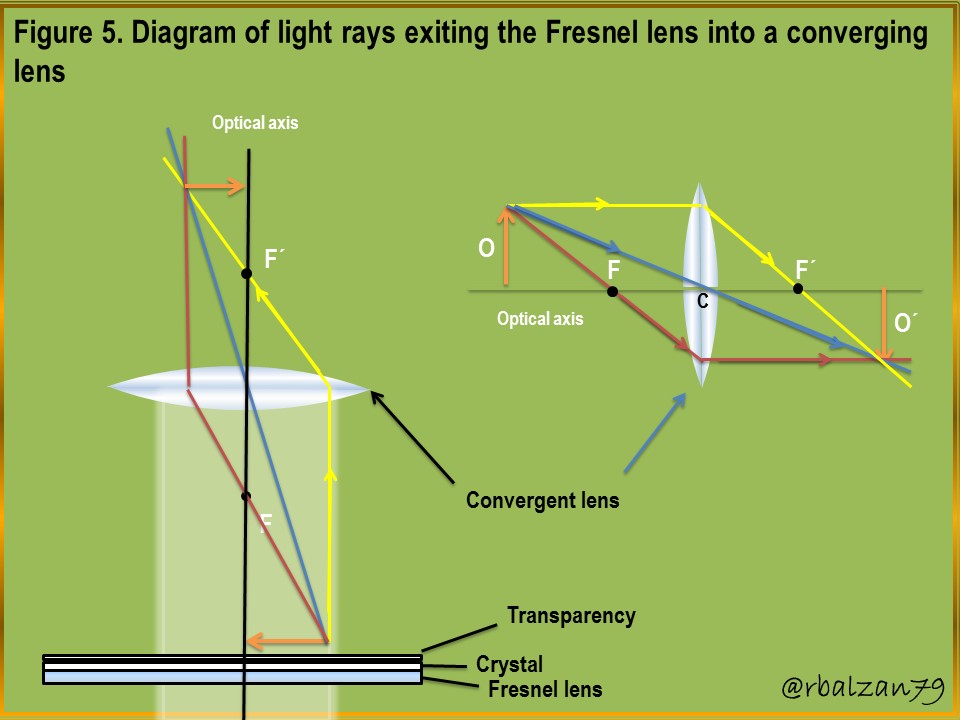
In the previous figure 5, you can observe the diagram of three rays of light that come out of the image that contains the acetate sheet, with these three rays, the first (yellow) parallel to the optical axis that when refracted passes through the image focus (F'), the second (blue) that passes through the center of the lens and, The intersection of the three rays gives us the image on the other side of the lens, a real image, inverted, therefore, now let's see how this image reaches the last optical element, a plane mirror, for this, let's look at the following figure 6.
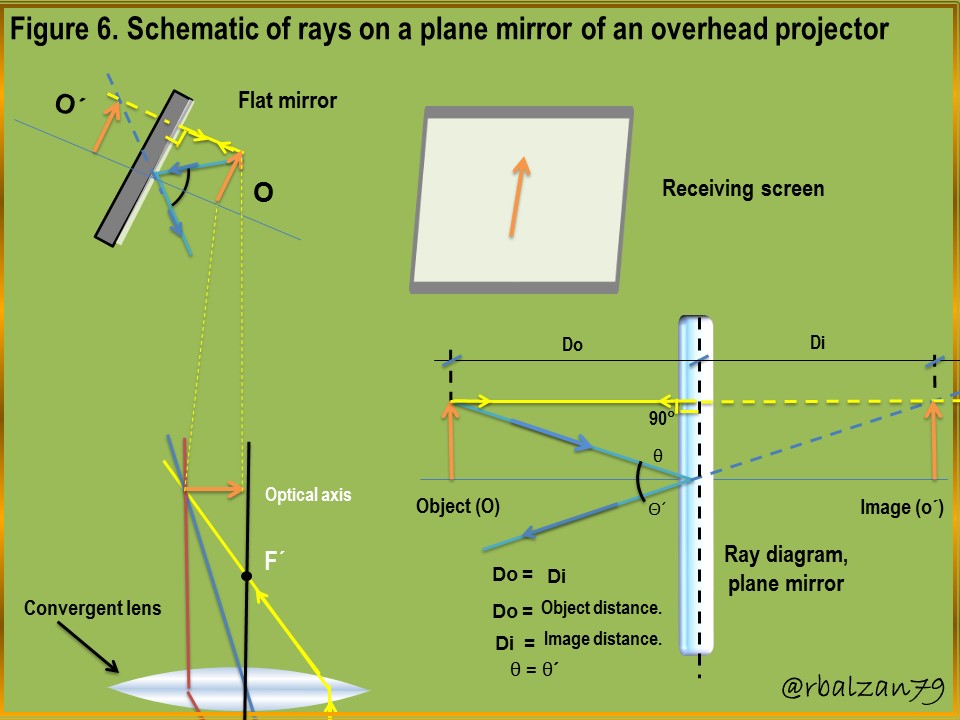
In this figure 6, you can observe the scheme of rays in a plane mirror, the image that comes out of the convergent lens will be the object of the plane mirror, which is going to be reflected on the polished reflecting surface, remembering some characteristics of the plane mirror, we can say, by the law of reflection, that we notice how one of the rays (blue) comes out of the object and bounces with the surface reflecting with the same angle as the angle of incidence, that we notice how one of the rays (blue) comes out of the object and bounces with that surface reflecting with the same angle as the angle of incidence, as the rays bounce, then, to obtain our image we have to project, behind the mirror, each ray used, then we use another ray (yellow) which comes out parallel to the optical axis, when reflected it bounces in the same direction, forming an angle of incidence and reflection of 90°.
With these two rays we generate a virtual image, of equal size and, not inverted (right) in relation to the orientation of the object, and therefore, the distance of the object and the image are equal, in this way the image generated by our plane mirror is projected onto a screen receiving the light rays as you can see in Figure 6, described above.
Conclusion
The light has given us the valuable ability to observe everything that is around us, and also, to take this learning in the development or design of wonderful optical instruments throughout our history, as I could see with you in this opportunity, to analyze the constituent elements of the entire optical system of an overhead projector of acetate sheets, this instrument maybe today can not be observed because they have been improved, however, its design represented a huge step in the generation of optical devices of better quality in the projection of images.
A wonderful tour through each of the optical elements of an overhead projector, starting with those elements implemented to concentrate and increase the power of the light generated artificially, these optical elements were, concave spherical mirror, converging lens and Fresnel lens, all of them very useful at the time of enhancing the amount of light generated by the artificial light source, so that this light, passed to the part where other optical elements are responsible for generating the image of the object we want to project at larger size.
In this upper part of this instrument, we found another convergent lens, which we could analyze its ray scheme in figure 5, after this convergent lens, we found a plane mirror analyzed in figure 6, and in this way, we could analyze the entire path of the light carrying the image of the object to be projected on the screen receiving these light rays.
To conclude, we can say that the sheet of acetate with the drawing, letters, etc., in the analysis of figure 5, is at a distance greater than the focal length of the converging lens, hence, the image is real and inverted, but, if on the contrary, the sheet is at a distance less than the focal length (f), then the image would be virtual and, These characteristics are very important when placing the acetate sheet that carries the drawing or writing that we want to project on the receiving screen, because depending on the above aspects will receive the image on the flat mirror responsible for bringing the final image to the screen, as you can see below in the following Figure 7.
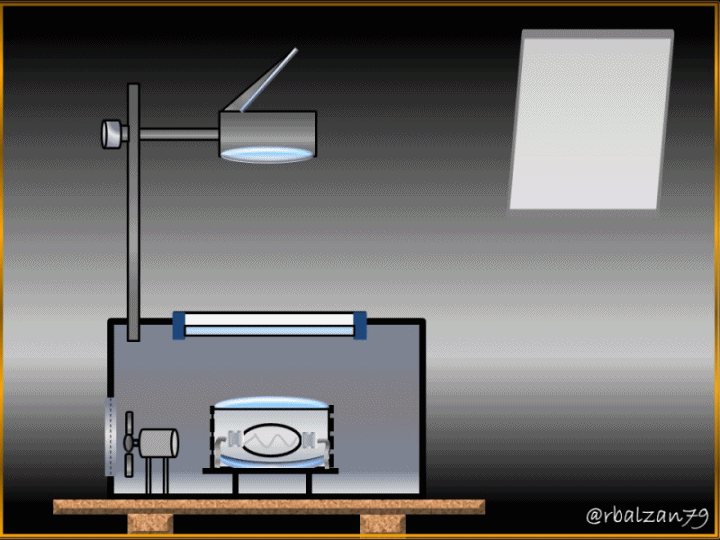
Until another opportunity my dear friends.>
Note: The images were created by the author using Power Point and Paint, the animated gif using PhotoScape.
Recommended bibliographic references
[1] GEOMETRIC OPTICS. Link.
[2] Convergent lenses. Link..
[3] Ray diagram in concave mirrors. Link..
[4] Fresnel Lens. Link.
[5] Images in Planemirrors. Link.
Thanks for your contribution to the STEMsocial community. Feel free to join us on discord to get to know the rest of us!
Please consider delegating to the @stemsocial account (85% of the curation rewards are returned).
You may also include @stemsocial as a beneficiary of the rewards of this post to get a stronger support.
Thanks for the valuable support dear @Stemsocial community. greetings.